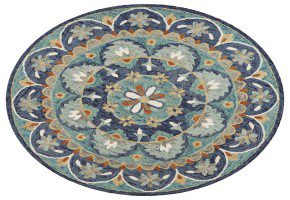The manuscripts often contain philosophical treatises, religious texts, and historical accounts that provide context to the rise and fall of empires. Questions arise when we consider the methods of preservation and the challenges faced by those who seek to study these ancient texts. Many manuscripts have suffered the ravages of time, with ink fading, pages deteriorating, and bindings crumbling. Scholars and conservators employ various techniques to stabilize and restore these texts, ensuring that future generations can access the knowledge contained within. For instance, the Dead Sea Scrolls, discovered in the 1940s, were hidden in caves near the Dead Sea for nearly two millennia. These scrolls, which include some of the oldest known biblical texts, have provided invaluable insights into early Judaism and the origins of Christianity.
- By engaging in open dialogues about beauty, challenging traditional standards, and promoting inclusivity, we can create a more compassionate and accepting world.
- For instance, video calls allow participants to observe body language and facial expressions, but the absence of physical presence can limit the richness of non-verbal communication.
- Intuitive decision making relies on gut feelings and subconscious processes rather than deliberate analytical thinking.
- For instance, green is frequently used by eco-friendly brands to convey sustainability and health, while black is often associated with luxury and sophistication.
- As trees are cut down, the habitat for countless species is destroyed, leading to population declines and extinctions.
The journey into the world of cloning is not just a scientific endeavor; it is a profound exploration of our values, ethics, and the future we envision for humanity. Ultimately, the conversation surrounding cloning is ongoing, and as technology evolves, so too must our ethical frameworks. It is our collective responsibility to ensure that the advancements we pursue align with our moral principles and contribute positively to society. Hieroglyphics and wall paintings reveal that fashion was deeply intertwined with religion and the afterlife, as the wealthy were often buried in their finest attire. The Greeks also introduced the concept of draping, which emphasized the natural beauty of the human form. Fashion in ancient Greece was not just about aesthetics; it was also a reflection of philosophical ideals, with the notion of beauty being closely linked to virtue and morality.
The journey to decode the mysteries of ancient artifacts is an ongoing endeavor, one that invites us to engage with our history and appreciate the rich tapestry of human experience. In the end, the study of ancient artifacts is not merely an academic pursuit; it is a profound exploration of what it means to be human. As we continue to unearth and analyze these objects, we are reminded of our shared heritage and the timeless questions that connect us across time and space.
porn anal giriş adresi ne oldu?
From an evolutionary standpoint, beauty often signals health and fertility, traits that are advantageous for reproduction. For instance, symmetrical features are frequently associated with genetic fitness, leading to a universal preference for symmetry across cultures. Studies have shown that infants as young as a few months old exhibit a preference for symmetrical faces, suggesting that our attraction to beauty is innate rather than learned.
As time progressed, the Romans contributed to the understanding of electrical phenomena through their studies of natural occurrences. The Roman philosopher Seneca noted the effects of electric fish, which could deliver shocks to their prey. However, it wasn’t until the Renaissance that a more systematic approach to studying electricity began to take shape. The revival of scientific inquiry during this period encouraged scholars to investigate the natural world more rigorously. In the 17th century, the groundwork for modern electrical science was laid by pioneers such as William Gilbert, who is often regarded as the father of electrical engineering. Gilbert’s seminal work, “De Magnete,” published in 1600, explored magnetism and static electricity.
The therapeutic benefits of music are particularly evident in populations such as children with autism, individuals with dementia, and those recovering from addiction. It is worth noting that the emotional impact of music can vary significantly from person to person. Individual differences, such as cultural background, personal experiences, and even neurological factors, can influence how we respond to music. This subjectivity highlights the complexity of the relationship between music and emotions, as each listener brings their unique perspective to the experience.
As organizations increasingly adopt AI technologies, the workforce will need to adapt, leading to a demand for new skills and a shift in job roles. This transition raises important questions about the future of work and the need for education systems to evolve in tandem with technological advancements. Unlike classical computers that process information in binary, quantum computers leverage the principles of quantum mechanics to perform complex calculations at unprecedented speeds. This capability has the potential to revolutionize fields such as cryptography, materials science, and drug discovery. For example, quantum computers could simulate molecular interactions with incredible precision, accelerating the development of new pharmaceuticals and materials.
By sharing their experiences and perspectives, these poets challenge stereotypes and promote dialogue, fostering a greater understanding of the complexities of the human experience. The rise of spoken word poetry has further amplified the cultural impact of poetry in recent years. This dynamic form of expression combines performance with poetic language, creating an engaging and accessible medium for storytelling. Spoken word artists often address pressing social issues, using their platform to raise awareness and inspire action. Events like poetry slams and open mic nights have become spaces for marginalized voices to be heard, allowing individuals to share their stories and connect with audiences on a personal level.
This storytelling aspect of music allows listeners to connect with the artist on a deeper level, fostering empathy and understanding. By sharing their stories through music, individuals can inspire others and create a sense of shared humanity. Engaging with music can also enhance spatial-temporal skills, which are crucial for success in fields such as mathematics and engineering. The history of cinematography is a fascinating tale of innovation, creativity, and the relentless pursuit of storytelling through moving images. This article explores the key milestones in the history of cinematography, highlighting the pioneers, technological advancements, and artistic movements that have defined this dynamic field. The invention of the motion picture camera marked a significant turning point in visual storytelling.
porn anal ile her Cuma kayıplarınız için ikinci bir şans var
As societies recover from the pandemic, there is an opportunity to integrate climate resilience into recovery plans, ensuring that we build back better and more sustainably. Jubilantly, grassroots movements are also gaining momentum, as individuals and communities take action to combat climate change. From local clean-up initiatives to global climate strikes, the collective voice of the people is becoming increasingly powerful. These movements reflect a growing awareness of the impact of climate on our lives and the urgency of addressing it. The youth-led climate movement, in particular, has galvanized a generation to advocate for meaningful change, reminding us that the future is in our hands. Just as the ancient civilizations relied on their understanding of the environment to thrive, modern societies must cultivate a deep respect for nature.
- This transformation has been influenced by various factors, including cultural exchanges, technological advancements, and the innate human desire to connect and convey thoughts.
- By celebrating cultural diversity and drawing inspiration from various traditions, architects can create spaces that honor local heritage while embracing contemporary design principles.
- For instance, Mediterranean countries like Italy and Greece utilize an abundance of fresh vegetables, olive oil, and seafood, reflecting their coastal geography and favorable climate.
- Virtual reality, augmented reality, and multimedia elements can enhance storytelling, allowing audiences to engage with the narrative in unprecedented ways.
- Studies have found a correlation between chronic noise exposure and an increased risk of cardiovascular diseases, including heart attacks and strokes.
- Engaging in activities that bring joy and fulfillment, whether through hobbies, volunteering, or pursuing passions, can enhance mental resilience and promote a longer life.
When individuals are authentic, they are more likely to attract meaningful relationships and opportunities that resonate with their true selves. This alignment between values and actions enhances mental clarity and empowers individuals to pursue their passions with confidence. By creating a clear mental image of desired outcomes, individuals can reinforce their commitment to achieving their goals.
Dark matter is thought to make up approximately 27% of the universe’s total mass-energy content, while ordinary matter constitutes only about 5%. The existence of dark matter is a vital aspect of cosmological models, as it provides the necessary gravitational scaffolding for galaxies to form and evolve over time. Fraudulent business schemes Various theories propose different scenarios for the ultimate destiny of the cosmos, depending on the density of matter and the rate of expansion. A third possibility is the “Big Rip,” where the expansion of the universe accelerates to the point that it tears apart galaxies, stars, and even atomic structures.
porn anal Para Çekme İşlemleri
This adaptability is a key component of emotional intelligence, enabling individuals to thrive in an ever-changing landscape. Social media platforms, online galleries, and digital tools have democratized creativity, enabling anyone with access to technology to participate in the creative process. This accessibility has led to a flourishing of diverse voices and perspectives, enriching the cultural landscape and fostering a sense of belonging among creators and audiences alike.
For instance, the renewable energy sector has seen exponential growth in recent years, providing new employment opportunities while reducing reliance on fossil fuels. Similarly, sustainable agriculture practices can enhance food security and promote healthier diets, benefiting both individuals and the environment. Just as the journey towards sustainable development requires collaboration, it also necessitates a shift in mindset.
Viewers and listeners bring their own emotions, memories, and interpretations to the experience, creating a dynamic interplay between the artist’s intent and the audience’s reception. This interaction can lead to profound moments of connection, where individuals find solace, inspiration, or validation in the emotions expressed through art. In conclusion, art serves as a powerful form of emotional expression, allowing both artists and audiences to navigate the complexities of human experience. Through various mediums, artists convey their innermost feelings, creating a shared emotional landscape that resonates with others.
- The strategic use of sound bites, visuals, and narratives can create a powerful impact on voter opinions.
- Making small, sustainable changes and seeking support from the community can pave the way for a healthier lifestyle.
- As we reflect on the influence of childhood memories, it is essential to recognize the role of resilience and personal agency.
- For instance, teachers can use online resources to supplement their lessons, enabling students to explore topics in greater detail and at their own pace.
- Practicing gratitude involves recognizing and appreciating the beauty that exists in our lives, whether it’s through nature, relationships, or personal achievements.
This discipline not only enriches our understanding of human history but also provides insights into the evolution of societies, technologies, and cultures over time. By examining the remnants of bygone eras, archaeology allows us to connect with our ancestors and comprehend the complexities of their lives. Archaeology is the scientific study of human activity through the recovery and analysis of material remains.
As stewards of the Earth, it is our responsibility to protect and restore these ecosystems, ensuring that they continue to thrive for generations to come. Through conservation efforts, community engagement, and education, we can work together to safeguard the marvels of Earth’s ecosystems and the myriad forms of life they support. Understanding the complexities of animal communication is a fascinating journey into the lives of various species. Communication is a fundamental aspect of life, allowing individuals to convey information, express emotions, and establish social bonds. While humans often rely on spoken language, animals utilize a diverse array of signals, sounds, and behaviors to communicate with one another. This article delves into the various features of animal communication, exploring the methods, purposes, and implications of these interactions.
Practicing gratitude is a simple yet powerful habit that can enhance overall well-being and longevity. Taking time each day to reflect on the things you are grateful for can shift your mindset and promote a positive outlook on life. Research has shown that individuals who regularly practice gratitude experience lower levels of stress, improved mental health, and even better physical health. Incorporating gratitude into daily routines can be as simple as keeping a gratitude journal or sharing positive experiences with loved ones. Establishing a consistent sleep schedule, creating a relaxing bedtime routine, and ensuring a comfortable sleep environment can all contribute to better sleep quality and overall health.
By integrating diverse perspectives, we can develop solutions that are not only scientifically sound but also ethically grounded. Different cultures and societies may have varying beliefs and values regarding cloning, which can influence how this technology is perceived and regulated. International dialogue and cooperation are essential in establishing ethical standards that respect cultural differences while promoting the responsible use of cloning technology. This global perspective can help ensure that ethical considerations are not confined to a single context but are instead informed by a broader understanding of human values. Furthermore, the potential for cloning to contribute to scientific advancements in medicine and agriculture presents both opportunities and ethical challenges. For instance, therapeutic cloning holds promise for regenerative medicine, potentially offering solutions for conditions such as spinal cord injuries, heart disease, and degenerative disorders.
Users may become increasingly reliant on external validation, which can lead to a fragile sense of identity. When individuals tie their self-worth to their online presence, they may experience fluctuations in their mood and self-perception based on the feedback they receive. This dependency on social media for affirmation can hinder the development of a stable and resilient personality. Conversely, social media can also serve as a platform for self-exploration and identity formation. For many users, particularly adolescents and young adults, social media provides a space to experiment with different aspects of their identity.




 Round Rugs
Round Rugs  Wool Rugs
Wool Rugs  Vintage Rugs
Vintage Rugs 


 Carpet Tiles
Carpet Tiles  Carpet
Carpet 
 Embossed Rug
Embossed Rug  Plain Rug
Plain Rug 
 2.5'*4'
2.5'*4'  2'*3'
2'*3'  3'*5'
3'*5'  5*7.5
5*7.5 













 Artificial Grass
Artificial Grass  Mats
Mats 
 Soil
Soil  Fertilizer
Fertilizer  Pesticides
Pesticides